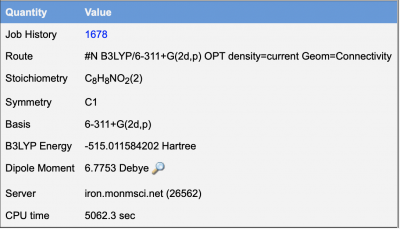Acetaminophen Radicals
The Ab-initio computation of the acetaminophen radical. The goal of this project is to elucidate where electrons are located on the molecule when a radicalization occurs.
Background
Acetaminophen(APAP) is an active ingredient in many over-the-counter and prescription painkillers, such as Tylenol and Oxycodone. APAP is also responsible for approximately 50% of the cases of acute liver-failure in the United States and Great Britain. Treatments for acetaminophen-induced liver injury(AILI) are limited. The current mechanism for AILI is the production of hepatotoxic NAPQI as a metabolite in an enzymatic, two-electron oxidation. However, evidence also supports a one electron oxidation.
Web MO/Gaussian
Web MO/Gaussian is a software containing various basis sets that allow for various levels of computational chemistry.
B3YLP/6-311+G(2d,p)
After running a calculation on Web MO/Gaussian, the following results were reported.

|
Analysis
As seen on the electron density map above, the radical spends a lot of time at the ortho positions.


